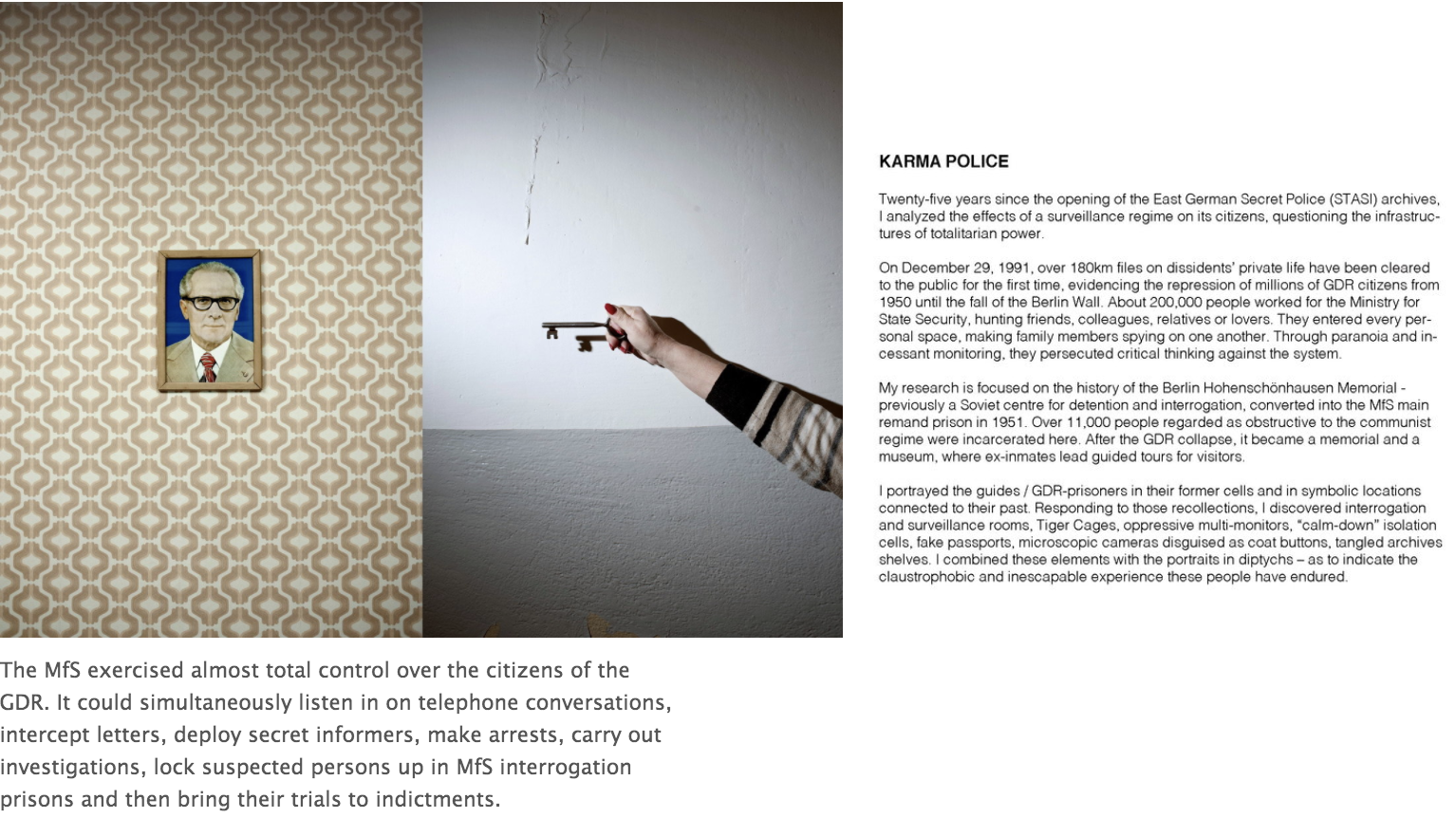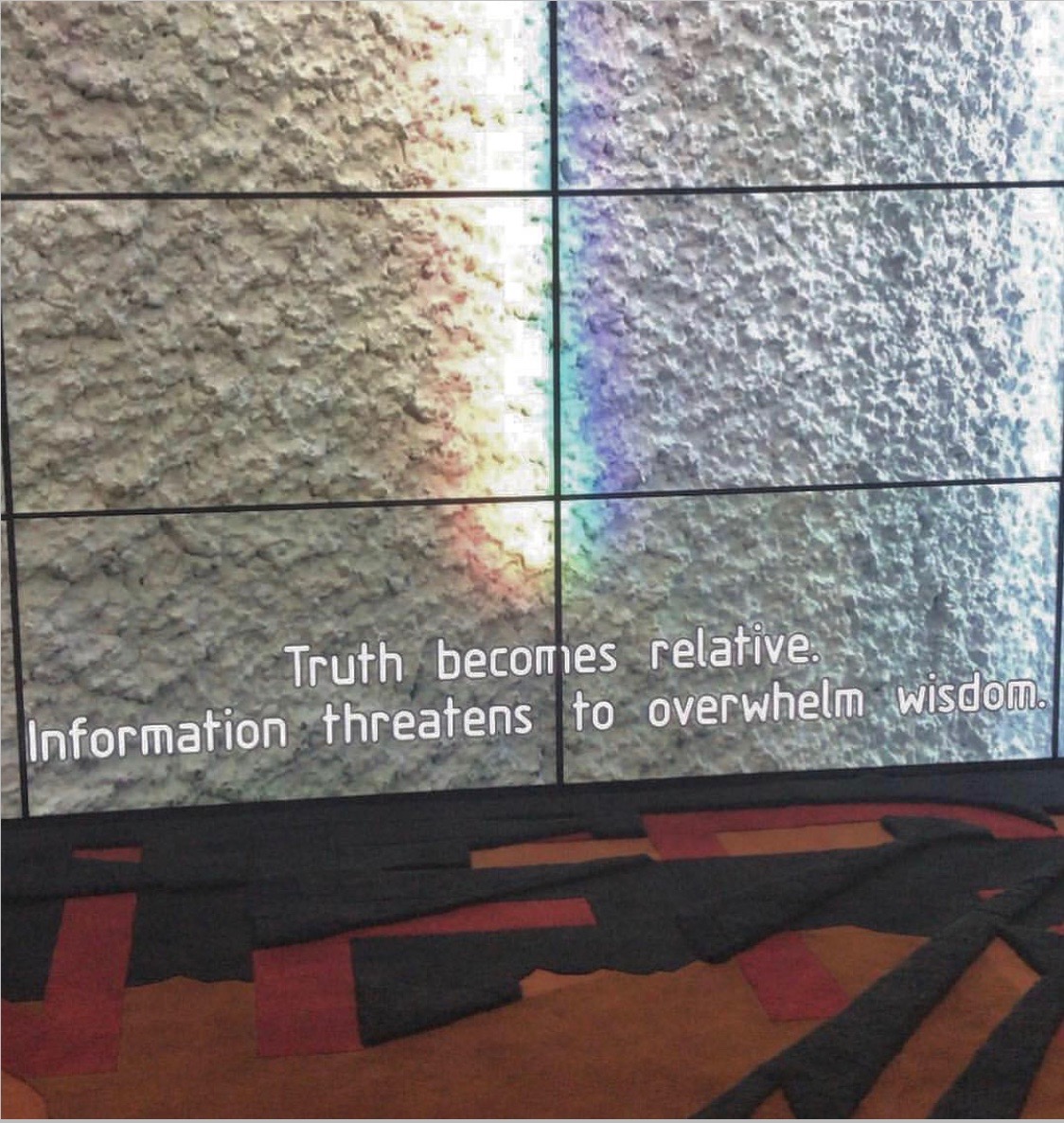Peace may come from understanding, dialogue, empathy, it may ensure days ahead are brighter for all. Peace-keeping and peace-building takes time, and sometimes to shorten that time, time is taken advantage of. Surveillance is a double edge sword, it protects us from harm, but it may infringe on our Human Rights. Through new technologies and data collecting, on one side humanity feels protected, on the other, it may leave us vulnerable, succumbing to an Orwellian world. Art and artists have responded to that duality regarding the notion of surveillance.
In these challenging times, Yuval Noah Harari has spoken and written about surveillance after COVID-19. He warns us on the choices we have to make for the type of world we want to live in when the pandemic passes. Our choices will shape our culture. According to Harari's article in the Financial Times, we face a choice between totalitarian surveillance and citizen empowerment as well as a choice between nationalist isolation and global solidarity. Harari warns us on governments wanting to monitor our biometric data en masse, which may lead to them knowing how we feel, and thus they may then be able to predict our feelings.
These notions are complex for us and for the world, debate and understanding amongst nations, communities and people will need to occur if we are to avoid entering a future that infringe on our Human Rights, all whilst ensuring we are protected from any harm.
Below are a few examples of when art tackles the notion of surveillance:
Francis Alÿs
The Nightwatch (2004) by Francis Alÿs, explores the notion of surveillance set in a public institution. The art piece looks to address the London surveillance system and amount of cameras around the city.
The artwork which consists of video work, is set in the middle of the night, in the deserted National Portrait Gallery, where the artist releases a fox to prowl around the museum. He uses the institution's CCTV system to track the animal's movements. The National Portrait Gallery does not hide its CCTV system but places several monitors within its exhibition displays and so was the perfect museum to host the artwork.
The art video places us the viewer in a voyeuristic space, following the fox's walk, mirroring the relationship between London's inhabitants, and its surveillance system.
https://francisalys.com/the-nightwatch/
Ai Weiwei
In 2008, the Sichuan province experienced an earthquake. Because of the lack of transparency by the government in China during the aftermath, Ai Weiwei, launched a "Citizens' Investigation" to compile names and information of the student victims. Ai Weiwei was placed under house arrest in 2010 by the Chinese police. In 2011, he was re-arrested, and his art studio searched. He was given bail in 2012, and remained until 2015 under surveillance and restrictions of movement. Much of his art work, explores surveillance:
S.A.C.R.E.D., 2011-2013
This artwork is a remake of Ai Weiwei's time in detention. It takes the form of six iron cuboids with miniature figures of the artist and his guards. The viewer is able to peer inside, view, experience and further imagine Ai Weiwei's time imprisoned.
check this link for images and further information: https://www.lissongallery.com/exhibitions/ai-weiwei-disposition
So Sorry
So Sorry is Ai Weiwei's film covering the start of the tensions between him and the Chinese Government. The tension between them began as a result of Ai Weiwei and his studio looking into identifying the names of the students who had perished in the Sichuan earthquake due to poor building constructions. Physically beaten by the police, Ai Weiwei then traveled to Munich to prepare for his exhibition at the museum Haus der Kunst. Upon arriving to Germany, he had emergency surgery for his brain haemorrhaged caused by the beatings.
check this link for images and further information: https://hausderkunst.de/en/exhibitions/ai-weiwei-so-sorry
Surveillance Camera
Surveillance Camera are marble Sculptures replicating the cameras that were placed in front of Ai Weiwei's studio.
Trevor Paglen
Trevor Paglen creates art and takes photography of political landscapes, such as secret air bases and offshore prisons, as well as the networks of data collection and surveillance, spy satellites and the digital world.
An English Landscape by Trevor Pagden, is a large, panoramic photograph that had been placed across the length of a disused station platform at Gloucester Road Tube station with Art on the Underground https://art.tfl.gov.uk/. A cluster of white dome structures in the landscape portray the communications and intelligence-gathering base near Harrogate, Yorkshire. An English Landscape showcases how we may 'not see' or 'see' global surveillance.
.jpg)
An English Landscape, 2014, © Art on the Underground from Michaela Crimmin interview
Martina Cirese
"Karma Police" is a set of photographs by Martina Cirese. The art project looks at the effects of the surveillance by the STASI, the East German Secret Police, on its citizens. In 1991, files on citizens were released, revealing private information on their lives as well as the fact that many people had worked for the Ministry for State Security, reporting on friends and family. Martina Cirese's work and research focuses on the history of the Berlin Hohenschönhausen Memorial. People who were seen to be against the communist regime, were taken there. The space became a memorial and museum after the collapse of the GDR. The artist's portraits are of former GDR-prisoners in their former cells and of today's museum guides. Through her research, Martina Cirese, found surveillance rooms, miniature cameras, fake passports, amongst many things. She combined some of these elements within the portraits to implement the claustrophobic feel and experience people would have felt.

https://www.martinacirese.it/karma-police
Metahaven


Stills from Eurasia (Questions on Happiness) by Metahaven at their exhibition Version History
at The Institute of Contemporary Arts in London
Version History was an exhibition of three films by Metahaven the art group made up of Vinca Kruk and Daniel van der Velden.
The filmmaker artists are looking at how computer infrastructures, media and cloud platforms inform the future ,re-evaluate history and present our current realities. Through showcasing how political narratives have sought to look at history, it questions how the future is waiting to reflect our truths or a version of it. Eurasia, Questions on Happiness, was shown on a 16 screen video wall. Combining different genres such as viral videos, documentary and poetic science fictional storytelling, the film looks at the overlapping technological, geopolitical and emotional conditions through political outbreaks and the continent of Eurasia being a megablock or a construct. In the film the continent, is seen as fractured and created by self-learning data sites that trigger world events. The imagery references essays and texts such as of Emile Durkheim, Variations Of Truth, and voiced over the flickering clips are poems such as I Know The Truth 1918 by MarinaTsvetaeva.
“The film hints at fake news being a man-made proxy for the indifference an artificial intelligence may feel toward the human condition.” Political ideology and thought on the internet are intertwined as both place fact in fiction and fiction in fact alongside everything becoming more data driven.
Will individuals turn into data and data become regnant?
We hope not....but we are heading that way or already there? if politics doesn’t do more in the digital arena to protect us, from what is, yes a great tool, but one that needs like everything else and everyone, to be kept in check and driven away from the word power and more towards (as lots of amazing people are doing) the word empower. This art film and artwork referencing politics showcases how art can be a tool for understanding and looking at the difficult questions we face. Art can help ease in these discussions that we all must have.

Graffiti (artist unknown-please comment if you know the graffiti artist of this), in Gemayze Beirut Lebanon. What does this mean to you? Perhaps it represented the days of war in Lebanon and the caution people took regarding their perspectives, their beliefs and their politics. But it could also be about noise, when the Gemayze street was pumping and the music and crowds coming from the trendy bars and nightspots took over the street, some residents where tiered of the constant loud sound.
It could mean both or none of the above.
It also doesn't have to reflect the days of the war, the graffiti could reflect today's world, a metaphor to showcase our relationship to technology, and the issues there have been with our data being taken and our online preferences being monitored.
Not sure what it represents exactly, but what is sure, is that art and graffiti are a way for people to express themselves and have a voice and be heard when silencing wants to reign.
